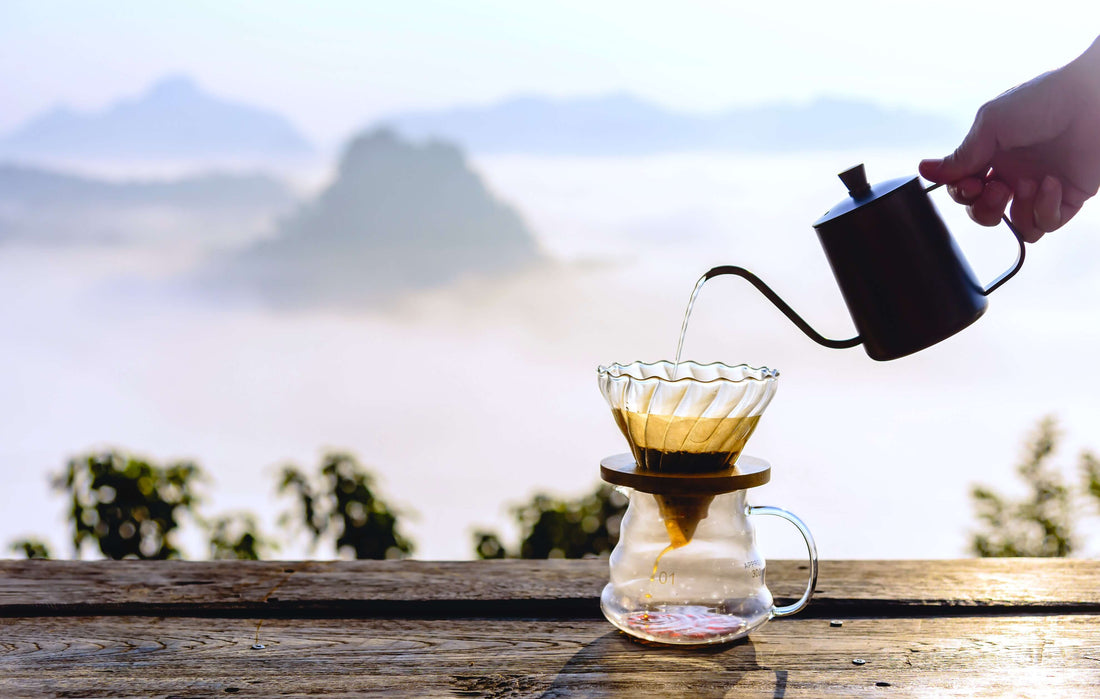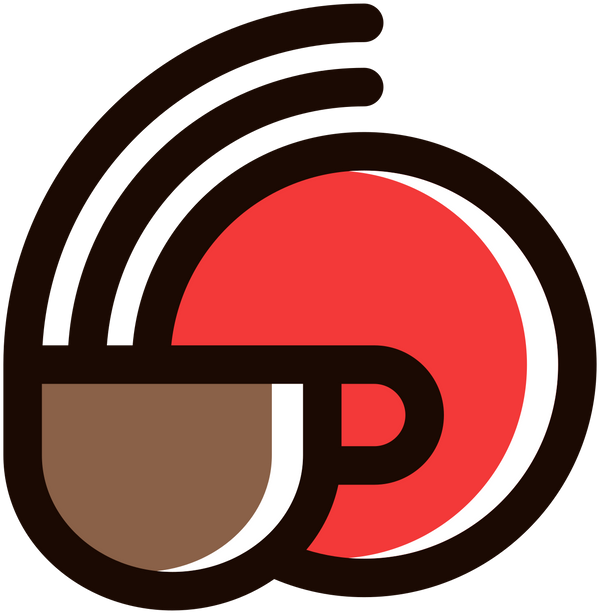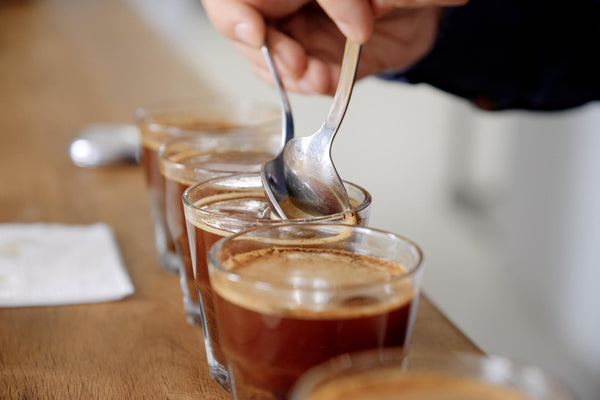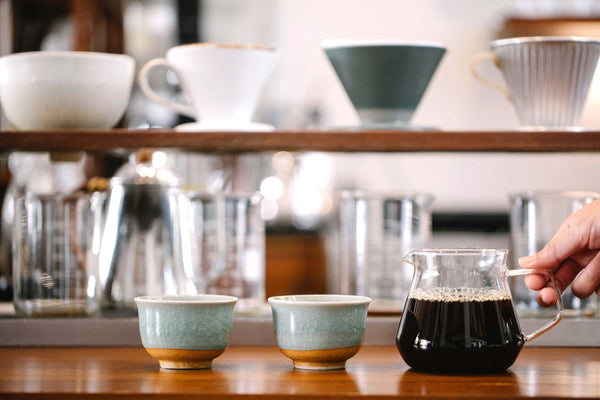
The Five Coffee Brewing Variables
tai attitude6 min read
To make a cup of coffee, a barista requires three essential components: equipment, ingredients, and skill.
Equipment refers to the tools we use, such as a coffee grinder, coffee maker of choice, etc.
Ingredients are what we use to make the composition of brewed coffee; in this case, they consist of our chosen coffee beans and water.
Skill depends on the recipe and execution of the five key coffee-brewing variables. These are brew ratio, grind size, temperature, turbulence, and brew time.
Unlike equipment and ingredients, which the barista at times has no control over, skill is 100% within the barista's control.
The objective of skill is to present coffee at its best by providing the most effective input using the available equipment and ingredients.
In this article, let us focus solely on the skill aspect—the five key coffee-brewing variables. For better understanding, feel free to read in sequence, or each variable independently, at your own pace.
Brew ratio
Brew ratio is the variable representing the ratio of ground coffee to water used in the coffee brewing process. It is typically communicated as a ratio, like 1:15, indicating 1 part ground coffee to 15 parts water.
Depending on the equipment and ingredients used, the brew ratio varies.
We recommend not changing the ground coffee part and only altering the water part. For example, 1:14, 1:15, 1:16, 1:17, etc. And for espresso: 1:1.5, 1:2, 1:2.5, etc.
Using sensory information as a guide, perceive the strength (thickness or thinness) and extraction (sour, sweet, or bitter) of the brewed coffee, then adjust the brew ratio by one part, less water or more water, accordingly for the next brew.
Read more about strength and extraction.
Using less water will result in higher strength but lower extraction in the cup.
The brewed coffee will taste thicker (higher strength) as less water is used. At the same time, having less water also causes ground coffee to be under-extracted, resulting in more sourness (lower extraction).
Using more water will result in lower strength but higher extraction in the cup.
The brewed coffee will taste thinner (lower strength) as more water is used. At the same time, having more water also causes ground coffee to be over-extracted, resulting in more bitterness (higher extraction).
Grind size
Grind size is the variable that determines the available surface area of ground coffee for the coffee brewing process.
Different equipment and ingredients require different grind sizes.
Using sensory information as a guide, perceive the strength (thickness or thinness) and extraction (sour, sweet, or bitter) of the brewed coffee, then adjust the grind size either finer or coarser accordingly for the next brew.
Using a finer grind, which exposes more of the surface area of ground coffee to water, thereby increases both strength and extraction in the cup.
The brewed coffee will skew towards being thicker (higher strength) and more bitter (higher extraction) at the same time.
Using a coarser grind, which exposes less of the surface area of ground coffee to water, thereby decreases both strength and extraction in the cup.
The brewed coffee will skew towards being thinner (lower strength) and more sour (lower extraction) at the same time.
Temperature
Temperature is a variable of energy for the extraction phase during the coffee brewing process.
Temperature either speeds up or slows down the rate at which the chemical composition of ground coffee is extracted in water, and this correlates with the duration of brew time required.
For example, one brew with a higher temperature of 100 °C extracts faster, which requires a shorter brew time; one with a lower temperature of 85 °C extracts slower, which requires a longer brew time.
Both temperatures can work, as the extraction phase happens in the same way but at different energy levels, which affect its speed, thereby requiring different brew times.
If, let's say, both the brew times above happen to be the same, then the 100 °C brew tends to taste more bitter, whereas the 85 °C brew tends to taste more sour.
Using sensory information as a guide, perceive the extraction (sour, sweet, or bitter) of the brewed coffee, then adjust the temperature either higher or lower accordingly for the next brew.
The higher the brew temperature, the faster the extraction phase will be, thus requiring a shorter brew time.
The lower the brew temperature, the slower the extraction phase will be, thus requiring a longer brew time.
Turbulence
Turbulence is a variable in a fluid’s movement during the coffee brewing process. It helps to ensure even extraction and accelerate the extraction phase.
A barista introduces turbulence to the extraction phase by agitation, swirling, or stirring during the coffee brewing process.
Every coffee preparation method will introduce a degree of turbulence during the coffee brewing process; it's just a matter of more or less. Generally, percolation brews have much more turbulence than immersion brews.
Read more about percolation and immersion.
Turbulence is chaos; it is one variable that is difficult to control, but can be overcome with practise. Therefore, it should not be the barista's primary way to increase extraction.
As turbulence accelerates the extraction phase, thereby increasing extraction, the key is to apply just the right amount of turbulence.
Using sensory information as a guide, perceive the extraction (particularly bitterness and astringency) of the brewed coffee, then adjust the turbulence either more or less accordingly for the next brew.
The more turbulence, the more extraction. Use this to your advantage or, unknowingly, probable disadvantage.
Brew time
Brew time is the variable that refers to how long the extraction phase takes from start to finish for the coffee brewing process.
Brew time is used to measure consistency between brews and has no impact on the coffee brewing process as, by itself, it does not affect the extraction phase.
For example, if a 3-minute brew tastes better than a 2-minute brew, it is because of what the barista has done right during the time frame, not because of how long it took to brew it.
How much of ground coffee to water, how much surface area, how much energy, and how much turbulence are quality determinants of the brew.
The time it took to brew it only serves as a reference for consistency.
Avowedly, time is a unique variable that we have yet to fully understand. Without time, nothing exists. With time, things do not just simply exist but depend on how we act within the time.
Perhaps it is the greatest brew variable of the five, not in terms of how much we have, but in terms of how we spend it.
In other words, yes, you can make deliciously brewed coffee regardless of what the brew time is.
Unlike the other four coffee-brewing variables, which create quality, brew time is rather a measurement of consistency.
In summary
When strength is high and extraction is low, or vice versa, pay attention to the brew ratio.
When strength and extraction are both high or low, pay attention to the grind size.
When extraction gets too high or too low, use the appropriate level of energy (temperature) to correlate to the right duration of brew time.
When extraction gets too high or too low, exercise caution and apply only the needed amount of turbulence.
Brew time refers to the duration of coffee brewing and is a valuable metric for assessing consistency between brews.
To truly know a barista's skill level, it means stripping away expertly engineered equipment and high-quality ingredients; instead, use decent equipment and ingredients to see what the barista can do.
They will dig deep into their understanding and application of the five key coffee-brewing variables.



